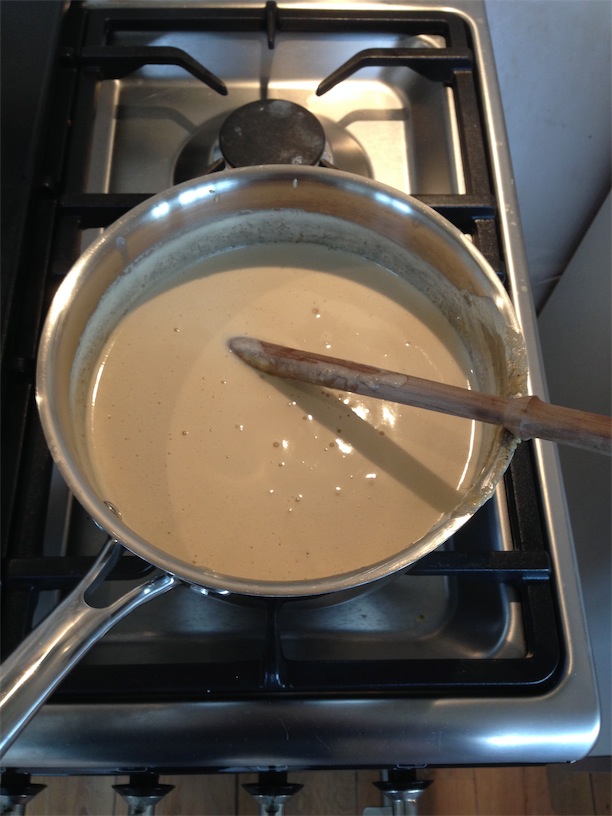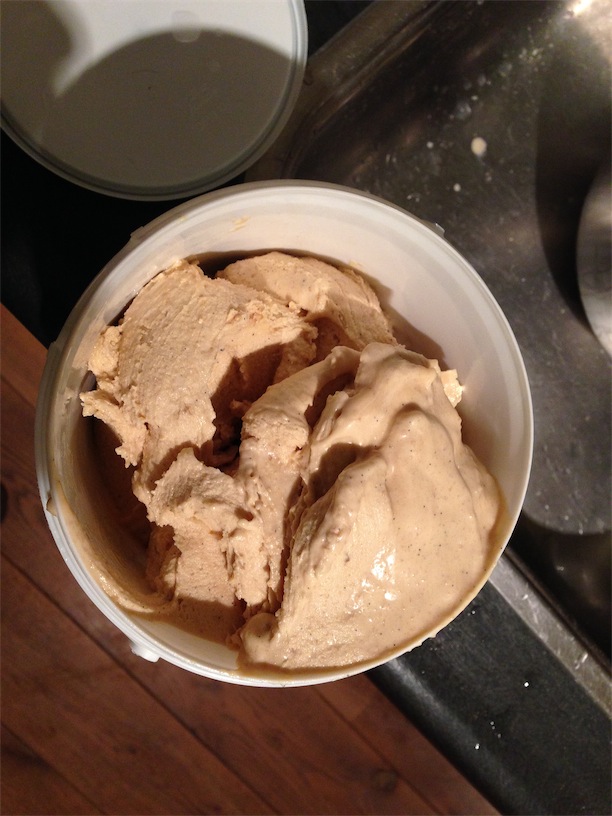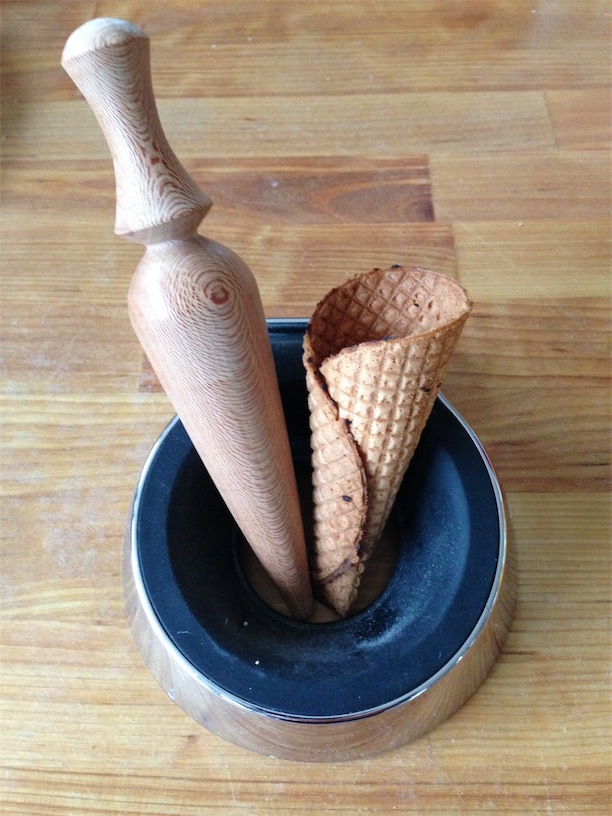You can’t avoid bagels in New York City. Or most anywhere else in the US for that matter. We love NYC, so we eat our fair share of bagels. Now bagels are defined by two things: the fact that the dough is boiled before baking, firming up the outer skin, thereby largely preventing oven spring, and the fact that they are boiled in a lye solution, with the lye hydrolysing some of the protein in the outer skin, promoting and increasing the formation of maillard products in the crust (i.e. browning) during baking. Both processes together result in a true bagel’s chewy nature and tasty browned, slightly tough crust. Without lye, it’s not a true bagel!
Many bagels, both home-made and commercial ones, are boiled in a solution not containing any lye – mostly the solution contains added sugars in the form of corn syrup, honey, or malt to sort of compensate by adding extra sugars to the outer skin which result in extra browning during baking – but this yields brown ‘pigments’ of a different kind and flavour, and also result in a different quality of crust. Some people, while agreeing that lye is important, will use weak lye substitutes, like baking soda (sodium bicarbonate), or (better) ‘true’ soda (sodium carbonate), usually because they are afraid to use ‘real’ lye (a solution of sodium hydroxide – aka drain cleaner) in cooking. However, a diluted lye solution is quite safe to work with, and food grade sodium hydroxide is easily obtainable – I get mine from a brewing supplies house. The only thing that you need to be careful with is the pure, solid sodium hydroxide – but if you are comfortable using drano to unclog your drains, then you shouldn’t be afraid of handling food grade hydroxide to make up a bagel boiling solution.
So here’s the recipe*:
For the dough:
380 g water
30 g honey
15 g salt
680 g white unbleached bread flour (preferably from a traditional mill – mine is from molen de Vriendschap in Weesp)
1.5 teaspoon instant dry yeast
For the boiling liquid:
2.5 l water
1/2 tablespoon sodium hydroxide
7 g salt
Notice that my dough recipe starts with the fluids. That’s because I use an Electrolux (Ankarsrum) Assistent mixer, which works best when starting with the fluid ingredients and gradually adding the dry ingredients. If you use a ’traditional’ stand mixer, hand mixer, or mix and knead by hand, start with the dry ingredients and gradualy add the liquids.
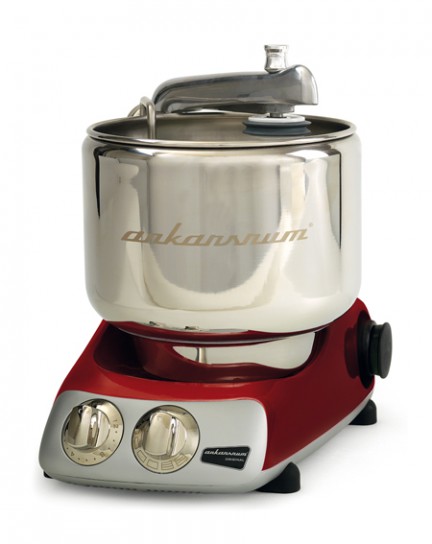
Bring all ingredients together into a homogeneous mass, and knead for about 15 minutes (Ankarsrum Assistent or by hand), or shorter as needed (stand mixer, hand mixer). Let the dough proof for 2-3 hours at room temperature, or overnight in the fridge. When proofed, remove the dough from the bowl, punch down and shape bagels; take a 100g piece of dough, roll it into a long rope, taper the ends and bring them together to form a ring, and roll the ends to join them together (see this video: http://www.youtube.com/watch?v=wFtCZDmWeNE, starting around 2:31). Put them on a baking sheet lined with silicone baking foil, and dusted with flour, and proof for another hour or so (or until a bagel dropped in boiling liquid will float rather than sink). Preheat your oven at 200°C.** Prepare the boiling liquid and bring to the boil. Drop the proofed bagels in, 3-4 at a time (depending on the size of the cooking vessel) and boil 3-4 minutes, turning them now and then, to ensure even hydrolysis of the skin – they will turn slightly ‘slimy’ and yellow on the outside. Remove from the boiling liquid with a slotted spoon, and place them back on the baking sheet. Once all bagels have been properly boiled, put the baking sheet in the oven and bake for 25-30 minutes, until golden brown.
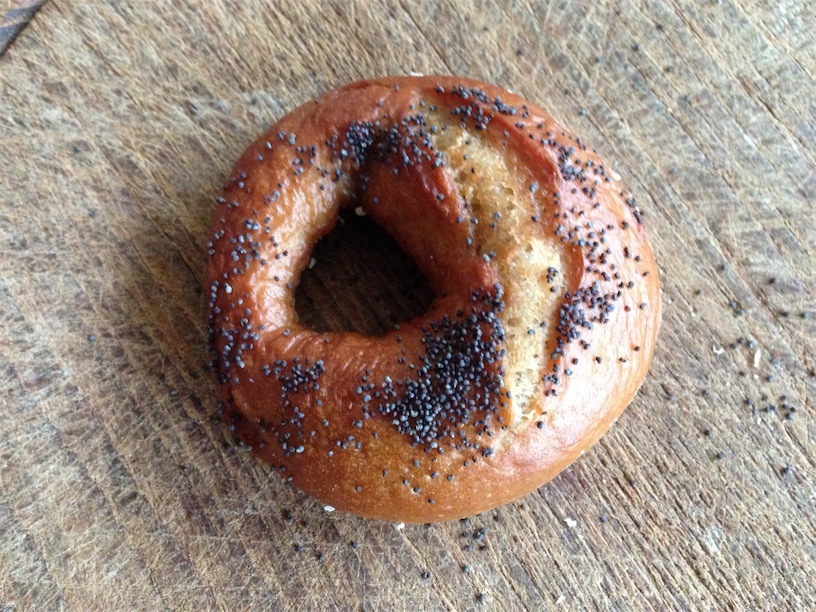
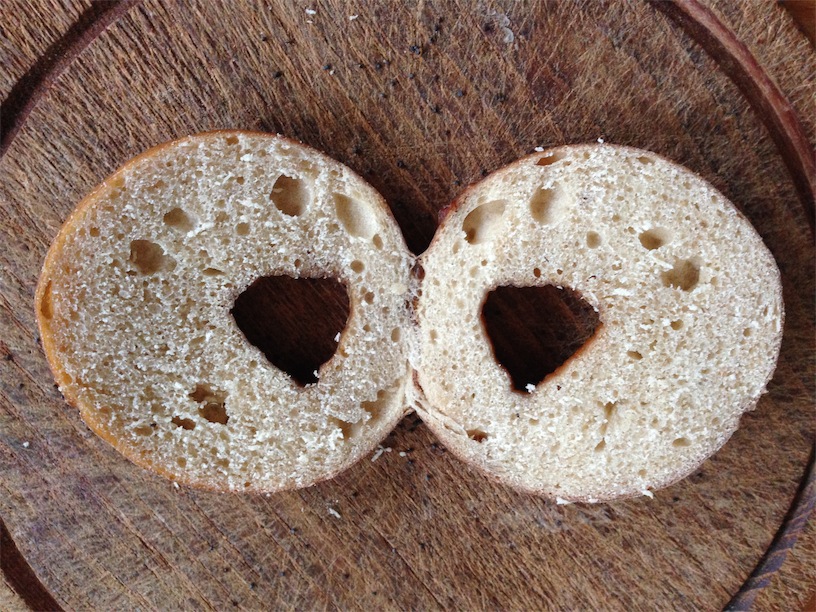
*Note: the dough recipe is adapted from Peter Reinhart’s Artisan Breads Every Day. Makes 12 bagels
**Ovens vary. Experiment to find the best setting and baking time for yours.

